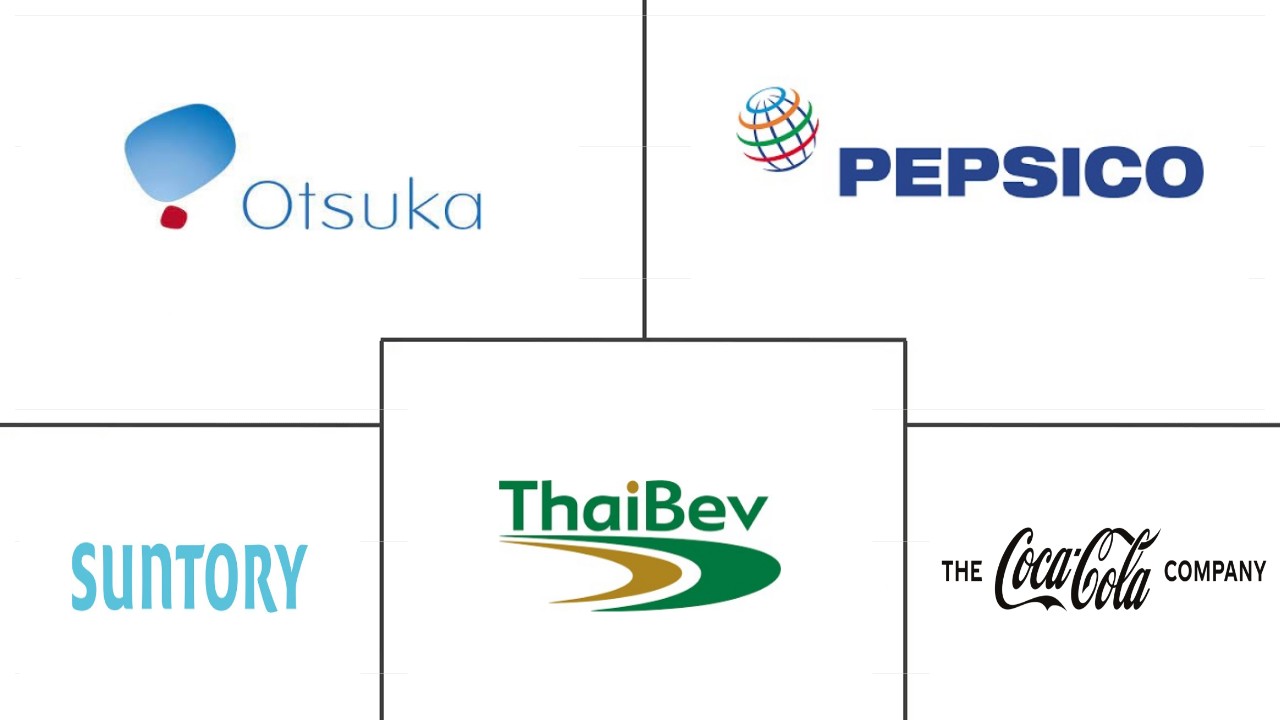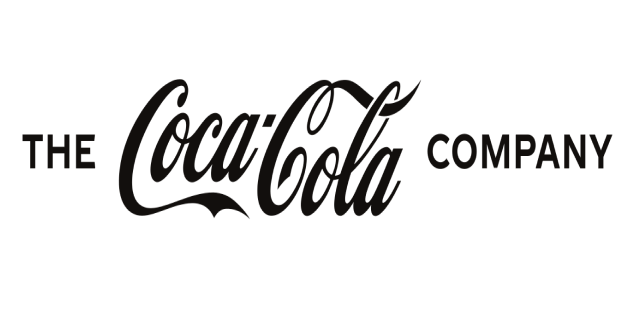Market Size of asia-pacific sports drinks Industry
|
|
Study Period | 2018 - 2030 |
|
|
Market Size (2024) | USD 8.11 Billion |
|
|
Market Size (2030) | USD 12.23 Billion |
|
|
Largest Share by Soft Drink Type | Isotonic |
|
|
CAGR (2024 - 2030) | 7.09 % |
|
|
Largest Share by Country | China |
Major Players |
||

|
||
|
*Disclaimer: Major Players sorted in no particular order |
APAC Sports Drink Market Analysis
The Asia-Pacific Sports Drinks Market size is estimated at 8.11 billion USD in 2024, and is expected to reach 12.23 billion USD by 2030, growing at a CAGR of 7.09% during the forecast period (2024-2030).
8.11 Billion
Market Size in 2024 (USD)
12.23 Billion
Market Size in 2030 (USD)
5.39 %
CAGR (2018-2023)
7.09 %
CAGR (2024-2030)
Largest Segment by Soft Drink Type
56.35 %
value share, Isotonic, 2023
Isotonic drinks contains ingredients such as water, carbohydrate, and electrolytes which balances body fluid and contains same number of osmotically active particles.
Fastest-growing segment by Soft Drink Type
8.82 %
Projected CAGR, Hypertonic, 2024-2030
Hypertonic drinks contains high levels of carbohydrate and glycogen in order to provide maximum energy uptake, the rising health concerns in the region propelling the sales.
Leading Market Player
22.88 %
market share, The Coca-Cola Company, 2022

The company has a large portfolio of brands in the Sports Drink market. It sells its Sports Drink products under its brand Aquarius which offers a wide range of flavors.
Largest Segment by Country
37.92 %
value share, China, 2023
Increased number of youth population involved in sports and recreational activities with rising preferences for health and wellness products led the growth in China.
Fastest-growing segment by Country
10.34 %
Projected CAGR, China, 2024-2030
Consumers are paying more attention towards health and participation in fitness activities has increased in the recent years which is fueling the sales in China.
The growing sports industry with an increasing number of fitness clubs leads the segmental growth
- The Asia-Pacific sports drinks market is growing at a steady pace during the study period, registering a growth of 22% from 2022 to 2025 by value. With the growing popularity of fitness programs and increased emphasis on a healthy lifestyle, the consumption of sports drinks is observed to rise substantially as it helps to rehydrate the body. Also, the rise in the number of fitness centers and gyms in the region is enhancing the demand for fortified sports drink products in the region. For instance, in Australia, the number of fitness centers and gyms rose from 3,859 in 2016 to 6,462 in 2021.
- Isotonic sports drinks dominate consumption in the regional market both by value and volume. Isotonic drinks have similar concentrations or tonicity of human blood, making them more preferred among consumers requiring intense hydration. The increasing number of sports enthusiasts in the region is also driving the preference and need for isotonic sports drink products. In 2023, a total of 11,970 athletes represented 45 National Olympic Committees (NOCs) in the Asia Olympics 2023. The demand for isotonic drinks is largely catered to through PET bottles, mostly with the increased availability in the market.
- However, the hypertonic sports drinks segment is anticipated to be the fastest-growing segment during the forecast period, registering a CAGR of 9.45% by value from 2024 to 2030. With a carbohydrate concentration of more than 10%, hypertonic sports drinks are largely beneficial as a post-workout recovery drink. Among the regions, Malaysia emerges as the most active country in 2023, with 61% of Malaysian adults meeting recommended physical activity levels, making the country the most physically active state.
Companies organizing sports events to attract consumer interest
- From 2021 to 2023, sports drink sales surged by 11.76% in Asia-Pacific. This growth can be attributed to the rising popularity of fitness programs and a heightened focus on healthy living. Sports drinks, known for their rehydrating properties, are witnessing a notable uptick in consumption. For instance, Singapore, a hub for sporting events, hosts over 100 races annually, spanning marathons, triathlons, and world championships. In this region, the success of the sports drink landscape hinges on factors like convenience, including ready-to-drink options with transparent formulations.
- Asian energy and sports drink manufacturers have a promising avenue to explore: catering to consumer interest in traditional medicine and familiar plant-based ingredients. Examples of such ingredients include Valerian root, honey, plant extracts, traditional Chinese medicine, and longjack. These botanicals appeal to consumers' palates and offer functional benefits. Notable examples include chamomile, ginger, and matcha.
- The functional beverage market is propelled by a growing health consciousness among consumers. Beverages enriched with vitamins, minerals, and amino acids are gaining traction. Companies are also taking the lead in promoting fitness and organizing events like marathons. For instance, in 2018, Coca-Cola held its flagship marathon in the Maldives. Other players, like PepsiCo Inc., are also actively engaging with consumers through sports events. In India, PepsiCo's Gatorade, thanks to its pioneering presence, has made sports drinks synonymous with functional beverages.
Asia-Pacific Sports Drinks Industry Segmentation APAC Sports Drink Industry Segmentation
Electrolyte-Enhanced Water, Hypertonic, Hypotonic, Isotonic, Protein-based Sport Drinks are covered as segments by Soft Drink Type. Aseptic packages, Metal Can, PET Bottles are covered as segments by Packaging Type. Convenience Stores, Online Retail, Specialty Stores, Supermarket/Hypermarket, Others are covered as segments by Sub Distribution Channel. Australia, China, India, Indonesia, Japan, Malaysia, South Korea, Thailand, Vietnam are covered as segments by Country.
- The Asia-Pacific sports drinks market is growing at a steady pace during the study period, registering a growth of 22% from 2022 to 2025 by value. With the growing popularity of fitness programs and increased emphasis on a healthy lifestyle, the consumption of sports drinks is observed to rise substantially as it helps to rehydrate the body. Also, the rise in the number of fitness centers and gyms in the region is enhancing the demand for fortified sports drink products in the region. For instance, in Australia, the number of fitness centers and gyms rose from 3,859 in 2016 to 6,462 in 2021.
- Isotonic sports drinks dominate consumption in the regional market both by value and volume. Isotonic drinks have similar concentrations or tonicity of human blood, making them more preferred among consumers requiring intense hydration. The increasing number of sports enthusiasts in the region is also driving the preference and need for isotonic sports drink products. In 2023, a total of 11,970 athletes represented 45 National Olympic Committees (NOCs) in the Asia Olympics 2023. The demand for isotonic drinks is largely catered to through PET bottles, mostly with the increased availability in the market.
- However, the hypertonic sports drinks segment is anticipated to be the fastest-growing segment during the forecast period, registering a CAGR of 9.45% by value from 2024 to 2030. With a carbohydrate concentration of more than 10%, hypertonic sports drinks are largely beneficial as a post-workout recovery drink. Among the regions, Malaysia emerges as the most active country in 2023, with 61% of Malaysian adults meeting recommended physical activity levels, making the country the most physically active state.
| Soft Drink Type | |
| Electrolyte-Enhanced Water | |
| Hypertonic | |
| Hypotonic | |
| Isotonic | |
| Protein-based Sport Drinks |
| Packaging Type | |
| Aseptic packages | |
| Metal Can | |
| PET Bottles |
| Sub Distribution Channel | |
| Convenience Stores | |
| Online Retail | |
| Specialty Stores | |
| Supermarket/Hypermarket | |
| Others |
| Country | |
| Australia | |
| China | |
| India | |
| Indonesia | |
| Japan | |
| Malaysia | |
| South Korea | |
| Thailand | |
| Vietnam | |
| Rest of Asia-Pacific |
Asia-Pacific Sports Drinks Market Size Summary
The Asia-Pacific sports drinks market is experiencing steady growth, driven by an increasing focus on fitness and healthy lifestyles. The rise in the number of fitness centers and gyms across the region is significantly boosting the demand for sports drinks, particularly isotonic varieties, which are favored for their ability to provide intense hydration. The market is characterized by a growing number of sports enthusiasts, which further propels the consumption of these beverages. Isotonic drinks dominate the market due to their similarity in tonicity to human blood, making them a preferred choice for consumers engaged in rigorous physical activities. The availability of these drinks in convenient packaging, such as PET bottles, is also contributing to their widespread adoption.
The market is witnessing a shift towards hypertonic sports drinks, which are expected to be the fastest-growing segment, offering benefits as post-workout recovery beverages. The region's health-conscious consumers are increasingly drawn to functional beverages enriched with vitamins, minerals, and amino acids. Major brands are innovating with sustainable packaging and exploring traditional medicine and plant-based ingredients to cater to evolving consumer preferences. The market is moderately consolidated, with key players like Otsuka Holdings, PepsiCo, Suntory Holdings, Thai Beverages, and The Coca-Cola Company leading the charge. These companies are actively engaging with consumers through fitness events and product innovations, such as Coca-Cola India's Limca Sportz and Danone China's electrolyte drinks, to capture a larger share of the growing market.
Asia-Pacific Sports Drinks Market Size - Table of Contents
-
1. MARKET SEGMENTATION (includes market size in Value in USD and Volume, Forecasts up to 2030 and analysis of growth prospects)
-
1.1 Soft Drink Type
-
1.1.1 Electrolyte-Enhanced Water
-
1.1.2 Hypertonic
-
1.1.3 Hypotonic
-
1.1.4 Isotonic
-
1.1.5 Protein-based Sport Drinks
-
-
1.2 Packaging Type
-
1.2.1 Aseptic packages
-
1.2.2 Metal Can
-
1.2.3 PET Bottles
-
-
1.3 Sub Distribution Channel
-
1.3.1 Convenience Stores
-
1.3.2 Online Retail
-
1.3.3 Specialty Stores
-
1.3.4 Supermarket/Hypermarket
-
1.3.5 Others
-
-
1.4 Country
-
1.4.1 Australia
-
1.4.2 China
-
1.4.3 India
-
1.4.4 Indonesia
-
1.4.5 Japan
-
1.4.6 Malaysia
-
1.4.7 South Korea
-
1.4.8 Thailand
-
1.4.9 Vietnam
-
1.4.10 Rest of Asia-Pacific
-
-
Asia-Pacific Sports Drinks Market Size FAQs
How big is the Asia-Pacific Sports Drinks Market?
The Asia-Pacific Sports Drinks Market size is expected to reach USD 8.11 billion in 2024 and grow at a CAGR of 7.09% to reach USD 12.23 billion by 2030.
What is the current Asia-Pacific Sports Drinks Market size?
In 2024, the Asia-Pacific Sports Drinks Market size is expected to reach USD 8.11 billion.

